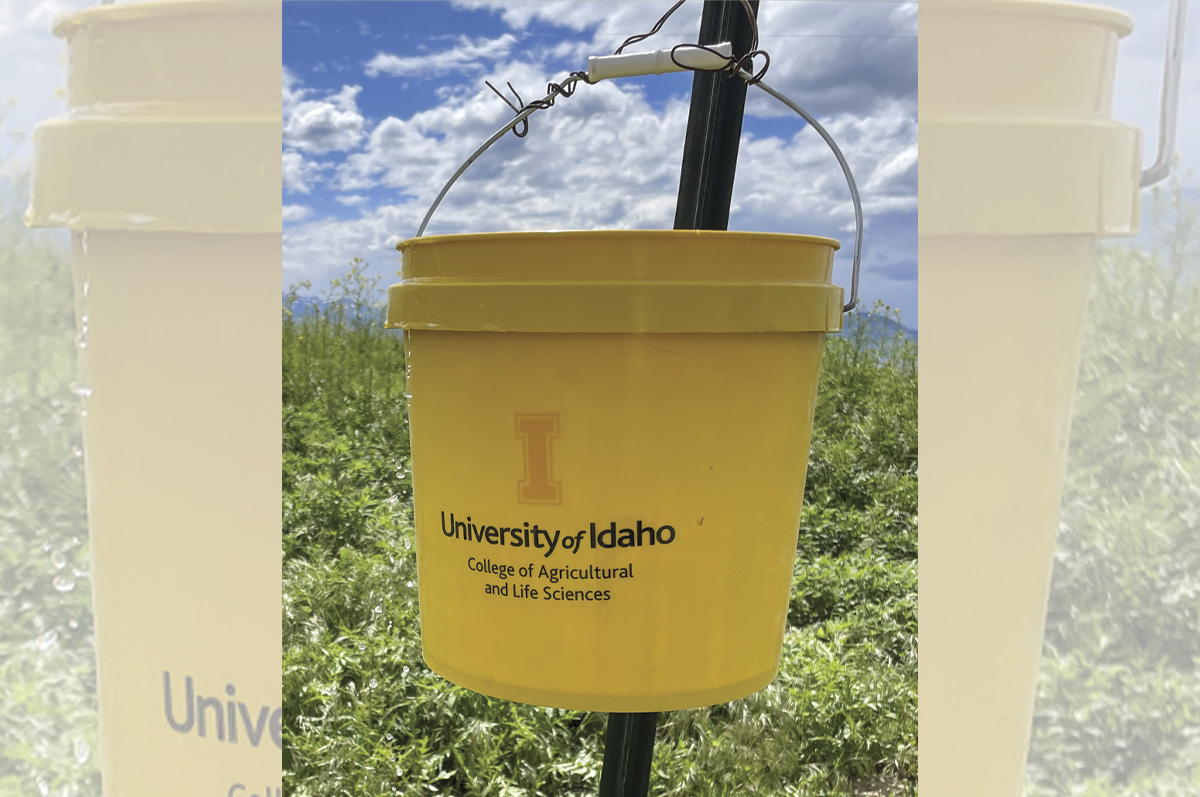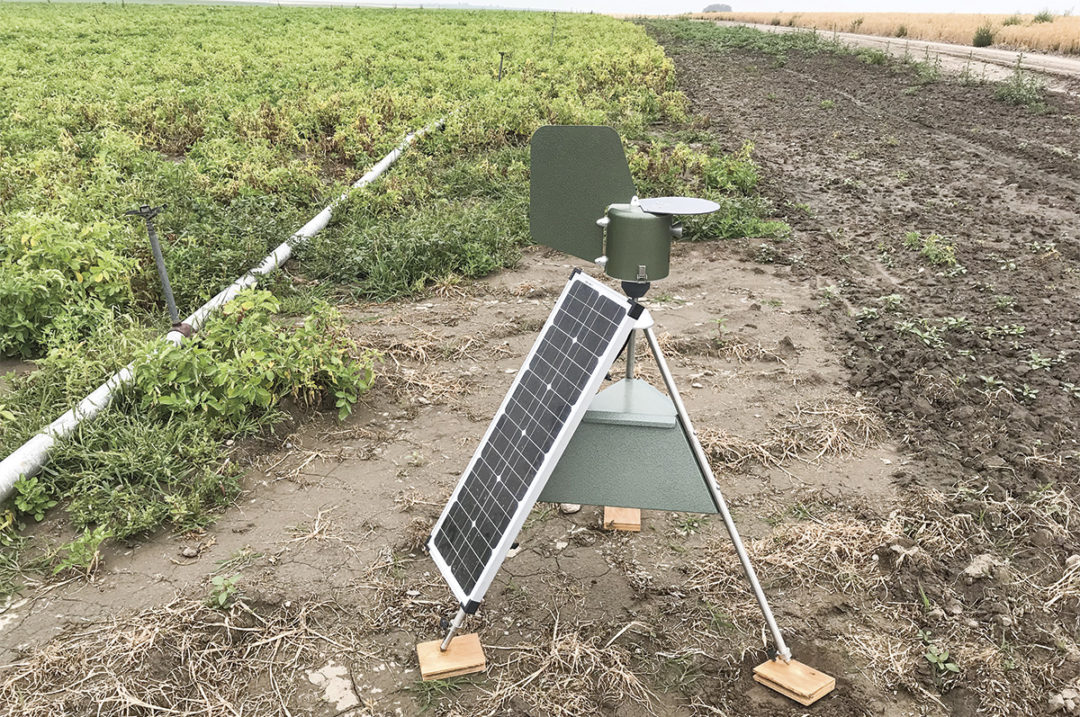Southern Idaho offers an ideal environment to grow potatoes, with its warm days and cool nights. Just as important, growers in the region can control the timing and amount of water with overhead irrigation. This feature creates an environment that has lower disease pressure compared to other regions that experience erratic rainfall. Despite these advantages, growers may still face potato disease challenges that can impact yield and quality, depending on the year and the field. To address these challenges, potato pathologists from the University of Idaho (UI) are dedicated to researching effective strategies for disease management.
Historically, potato diseases have posed challenges for Idaho potato growers. Diseases that are not uncommon in the region include early blight (caused by the fungus Alternaria solani), white mold (caused by the fungus Sclerotinia sclerotiorum), pink rot (caused by the water mold Phytophthora erythroseptica), fusarium dry rot (caused by various species in the fungal genus fusarium), black scurf (caused by the fungus Rhizoctonia solani) and bacterial diseases (such as soft rot, aerial stem rot and blackleg). Each year, UI researchers conduct specially designed trials to objectively evaluate the effectiveness of chemical fungicides, products suitable for organic production and other compounds against many of these pathogens. These trials help inform disease management recommendations and provide growers with unbiased insights into commercially available and forthcoming products.
In addition to annual efficacy trials and other research projects, efforts encompass monitoring for potato pathogens and vectors of potato pathogens, developing and providing diagnostic services for early and accurate pathogen detection, and generating training materials for integrated disease management. Below, these three key programs are highlighted. Funding sources such as the Idaho Potato Commission, USDA specialty crop block grants, USDA hatch programs and others contribute to these programs and other research efforts.
Pathogen monitoring initiatives
Three distinct monitoring programs have been deployed by UI researchers: the spore trap network, the potato psyllid/zebra chip monitoring program and the southern Idaho aphid monitoring network (for potato virus Y). Additional information about these programs can be accessed on our recently launched website: Idaho Pest Monitoring.
Spore trap network
Potato late blight, historically significant due to the Irish potato famine, is a rare occurrence in Idaho. However, its potential for rapid and devastating spread necessitates vigilant monitoring. Dr. James Woodhall leads a network of spore traps that collect daily air samples, which are then analyzed at the plant diagnostic services lab at the UI – Parma research and extension center on a weekly basis. Growers receive regular email updates with results and risk assessments for late blight development, based on pathogen presence and prevailing weather conditions.
Potato psyllid/zebra chip monitoring program
For this program, headed by Dr. Erik Wenninger, potato psyllids are trapped on yellow sticky cards, which are then sent to the UI – Kimberly research and extension center where psyllids are identified, counted and tested (via molecular assays) for the presence of the zebra chip disease pathogen. Zebra chip disease creates a dark, striped pattern in potatoes when they are fried for potato chips. Luckily for Idaho potato growers so far, this disease has not become a widespread problem, and the risk depends on the year and location. This program has been in place since 2012, a year after zebra chip was first observed in Idaho.

A 2-gallon yellow bucket is used in an aphid monitoring network to alert growers when aphids are in flight. Photo provided by Kasia Duellman.
Southern Idaho aphid monitoring network
Led by Dr. Kasia Duellman, this program employs yellow buckets filled with water to trap winged aphids. The collected aphids are sent to a lab at the UI – Idaho Falls research and extension center, where they are counted. Subscribers, primarily seed potato growers, receive weekly reports. This information is crucial for managing potato virus Y (PVY), a virus transmitted by various aphid species. If an early-generation seed potato grower has more than 1% incidence of PVY in their crop, the seed cannot be increased the following year and must be sold for commercial production. One approach that seed potato growers can adopt is applying mineral oils weekly to protect new growth from aphids transmitting the virus. Understanding when aphids are in flight and probing plants for a suitable host is vital in determining when to initiate mineral oil applications. While this regimen demands dedication, research from Kelie Yoho, a UI Ph.D. candidate in Wenninger’s program, suggests it may help reduce PVY incidence in some cases while preserving beneficial insects and minimizing the use of inappropriate insecticides that could exacerbate the problem.
Potato diagnostics
Accurately identifying a potato problem is essential to managing it. If a problem is incorrectly diagnosed, the “remedy” may make the situation worse. UI potato researchers across southern Idaho strive to be readily available to help diagnose potato problems early and accurately. Potato samples are regularly brought to UI facilities in Idaho Falls, Aberdeen, Kimberly and Parma. To support these efforts, the UI plant diagnostic services, directed by Woodhall, offers a range of tests from simple culturing to molecular diagnostics.
Integrated disease management
Our efforts in southern Idaho prioritize sustainable practices in combating potato diseases. We actively explore integrated disease management strategies that aim to reduce pesticide usage and minimize environmental impacts. A key objective for our potato pathology programs is to offer enhanced training in integrated disease management through workshops and field days. Look out for these events held across southern Idaho from June to August each year.
Conclusion
The ongoing collaboration between researchers, growers and the larger potato industry in southern Idaho continues to advance the region’s potato production. Through the development and adoption of integrated disease management strategies and the embrace of sustainable farming practices, our goals are to help ensure a vibrant future for the Idaho potato industry. Our work and the work of others with the UI and our partners highlight the value of collaboration and innovation in agriculture.



.jpg?t=1687979285&width=640)

.jpg?height=auto&t=1713304395&width=285)


